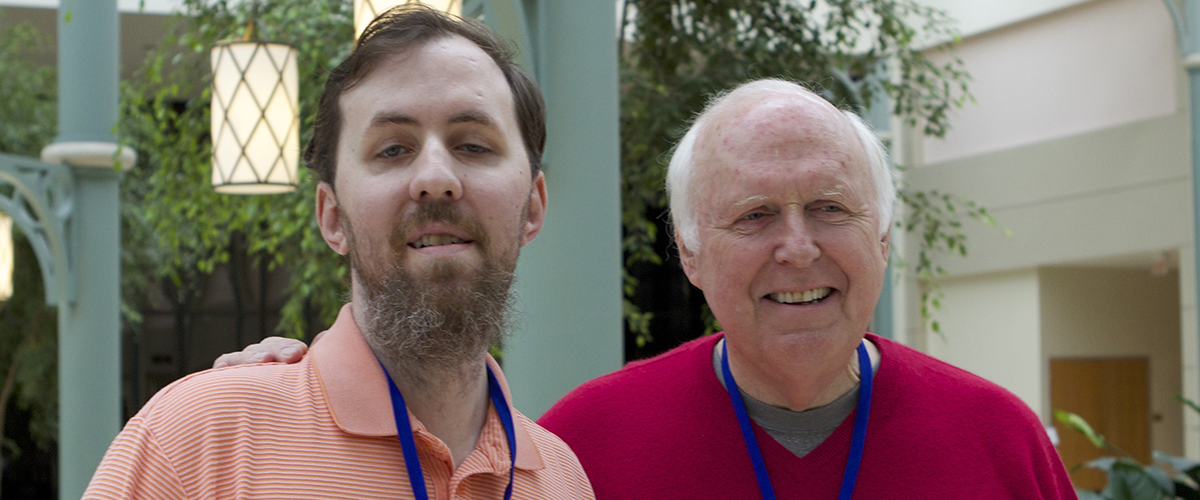FOR IMMEDIATE RELEASE
Contact: Dr. Tanya Stevenson
Myotonic Dystrophy Foundation
Phone: 415-800-7777
E-mail: tanya.stevenson@myotonic.org
Recent study on the prevalence of Myotonic Dystrophy Type 1 finds it is likely underdiagnosed in practice
OAKLAND, CA: Myotonic dystrophy type 1 (DM1) is likely underdiagnosed in practice according to research published in the January 20, 2021, online issue of Neurology®, the medical journal of the American Academy of Neurology.
Beginning in 2016 the Myotonic Dystrophy Foundation (MDF) funded Nicholas E. Johnson, M.D., now at the Virginia Commonwealth University, and his research partners Russell J. Butterfield, M.D., Ph.D., Katie Mayne, Tara Newcomb, Carina Imburgia, Diane Dunn, Brett Duval, Marcia L. Feldkamp, Ph.D., and Robert B. Weiss, Ph.D. at the University of Utah to conduct a study of the "Population Based Prevalence of Myotonic Dystrophy Type 1 Using Genetic Analysis of State-wide Blood Screening Program.” Previous estimates of the true population of DM1 assume prevalence as approximately 1 in 8,000 births based on diagnoses.
“Given that the diagnostic odyssey for myotonic dystrophy may last for over a decade, the Myotonic Dystrophy Foundation recognized it was possible that the mutation load in the population was significantly higher than the diagnosed prevalence, which is why we prioritized funding this research in collaboration with MDF UK,” said MDF CEO Dr. Tanya Stevenson.
Using a cross-sectional cohort of de-identified dried blood spots from the newborn screening program in the state of New York, the study sought to determine the true prevalence of DM1 in the population using an unbiased, cosmopolitan sample.
Using this method, the researchers found that the prevalence of individuals with CTG repeat expansions in the DMPK gene was up to five times higher than previous reported estimates. This represents a significantly higher DM1 prevalence of 4.76 per 10,000 births or 1 in every 2,100 births.
“This study highlights how truly common myotonic dystrophy type 1 is, and how often we miss the diagnosis. We, as a community, will need to take this information to identify approaches to finding these individuals so that appropriate clinical care may be given,” reflects Dr. Johnson.
“As we approach Rare Disease Day, this study is a valuable reminder of how important it is to have accurate information regarding how many people in the US have DM1 mutations or are at risk of repeat expansion. This information will help improve service provision, basic research, drug development, and policymaking related to myotonic dystrophy, and we are incredibly grateful for the groundbreaking research done by Dr. Nicholas Johnson and his team,” said Dr. Stevenson.
Ultimately, this study will help raise awareness about how common myotonic dystrophy is and in doing so encourage developers of novel therapies to work in myotonic dystrophy. More importantly, physicians caring for any patient with symptoms of DM should consider testing for this very common rare condition.
To access the Consensus-based Clinical Care Recommendations for DM1 and DM2, please visit MDF’s website: https://www.myotonic.org/toolkits-publications
###
About the Myotonic Dystrophy Foundation
The Myotonic Dystrophy Foundation (MDF) mission is to enhance the quality of life of people living with myotonic dystrophy and accelerate research focused on finding treatments and a cure. MDF is the world’s largest global advocate focused solely on myotonic dystrophy, helping patients and families in over 79 countries navigate the myotonic dystrophy disease process, and is often the first resource contacted by those newly diagnosed, their families, social workers, and clinical care teams around the world. MDF provides support and education, invests in research to advance treatments and a cure, and advocates for legislation, research, and infrastructure initiatives that advance our understanding of myotonic dystrophy, accelerate drug development, and improve diagnosis and care.
Publsihed on February 17th, 2021.

